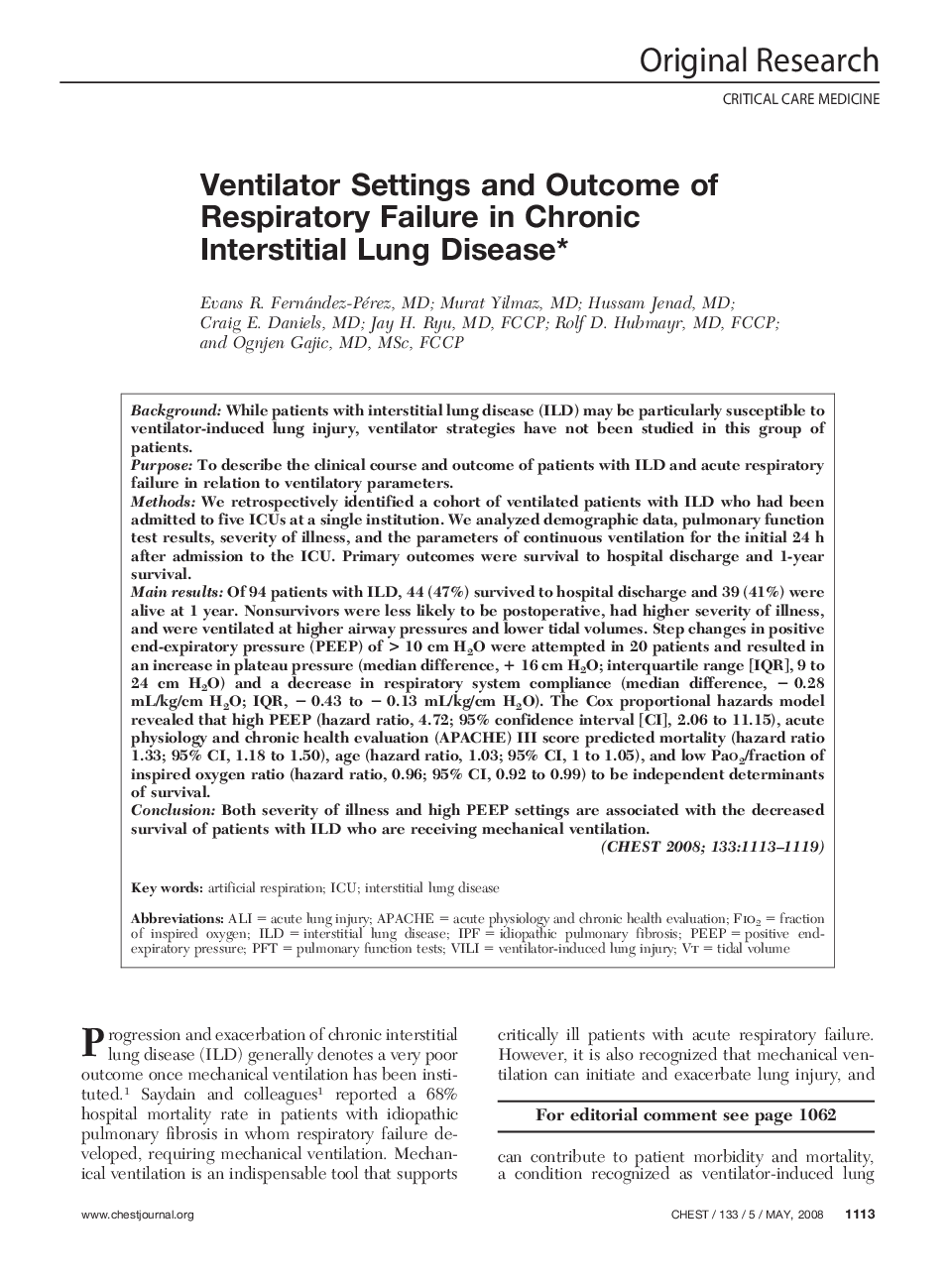| کد مقاله | کد نشریه | سال انتشار | مقاله انگلیسی | نسخه تمام متن |
|---|---|---|---|---|
| 2904155 | 1173405 | 2008 | 7 صفحه PDF | دانلود رایگان |

BackgroundWhile patients with interstitial lung disease (ILD) may be particularly susceptible to ventilator-induced lung injury, ventilator strategies have not been studied in this group of patients.PurposeTo describe the clinical course and outcome of patients with ILD and acute respiratory failure in relation to ventilatory parameters.MethodsWe retrospectively identified a cohort of ventilated patients with ILD who had been admitted to five ICUs at a single institution. We analyzed demographic data, pulmonary function test results, severity of illness, and the parameters of continuous ventilation for the initial 24 h after admission to the ICU. Primary outcomes were survival to hospital discharge and 1-year survival.Main resultsOf 94 patients with ILD, 44 (47%) survived to hospital discharge and 39 (41%) were alive at 1 year. Nonsurvivors were less likely to be postoperative, had higher severity of illness, and were ventilated at higher airway pressures and lower tidal volumes. Step changes in positive end-expiratory pressure (PEEP) of > 10 cm H2O were attempted in 20 patients and resulted in an increase in plateau pressure (median difference, + 16 cm H2O; interquartile range [IQR], 9 to 24 cm H2O) and a decrease in respiratory system compliance (median difference, − 0.28 mL/kg/cm H2O; IQR, − 0.43 to − 0.13 mL/kg/cm H2O). The Cox proportional hazards model revealed that high PEEP (hazard ratio, 4.72; 95% confidence interval [CI], 2.06 to 11.15), acute physiology and chronic health evaluation (APACHE) III score predicted mortality (hazard ratio 1.33; 95% CI, 1.18 to 1.50), age (hazard ratio, 1.03; 95% CI, 1 to 1.05), and low Pao2/fraction of inspired oxygen ratio (hazard ratio, 0.96; 95% CI, 0.92 to 0.99) to be independent determinants of survival.ConclusionBoth severity of illness and high PEEP settings are associated with the decreased survival of patients with ILD who are receiving mechanical ventilation.
Journal: Chest - Volume 133, Issue 5, May 2008, Pages 1113–1119